"'Twas the Night Before Christmas"
Everyone knows these famous lines even if the rest of the poems escapes them. “A Visit from St. Nicholas,” more popularly known as The Night before Christmas, was written in 1823 by Clement C. Moore (1779-1863) and is a staple in many families’ holiday traditions. But what accounts for the poem’s enduring popularity?
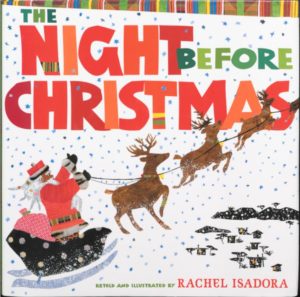
By all accounts, it is a very simple story: a father is awakened on Christmas Eve by the sound of St. Nick plopping down the chimney to distribute presents and then ride away. In trying to understand how readers can so enjoy such a basic narrative, what immediately comes to mind are other holiday classics like How the Grinch Stole Christmas, “Charlie Brown Christmas,” and the Rankin/Bass Christmas Specials which all exert a level of honesty in keeping the story simple so as not to lose the special feeling of the holiday. In all these specials the holiday stands at the forefront, which might be why we continually turn to them around this time of year.
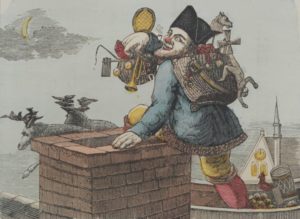
With an uncomplicated story, the poem lends itself to creative variations. It does not seek to explain the meaning of Christmas; rather, it lets its readers indulge in the exciting belief that there is a Santa Claus and appreciate the anticipation felt on Christmas Eve. The magic of the poem is in the details: The Night before Christmas is visually imaginative ─ “a masterpiece of genre word-painting,” according to Nancy Marshall. From stockings hung by the chimney to visions of sugarplums, from fresh fallen snow to Santa on a sleigh pulled by eight familiar reindeers, from Santa’s rosy cheeks to his belly that shook like a bowl full of jelly, the poem help popularizes and cements a distinct Christmas iconography in our contemporary imagination.
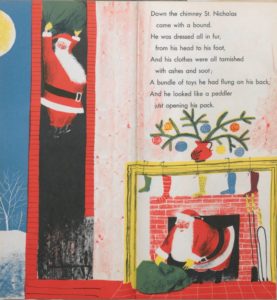
Nevertheless, it still leaves much to the imagination of the reader, allowing the story to be visualized in any and all artistic styles. For a nostalgic undertone of the holiday season, one could turn to illustrations by “Grandma Moses” (1860-1961), a self-taught American folk artist. Swiss-born illustrator and writer, Roger Duvoisin (1900-1980), gives us a dash of bright colors and whimsical humor in his illustrations for the poem. And for a more surreal and outsider vision, there is the imagery of American folk artist and minister, Howard Finster (1916-2001).
Every reimagining of Moore’s iconic poem allows the artists and writers to inject themselves into the narrative so that every scene is at once recognizable, yet new. Each new interpretation of The Night before Christmas also contributes to the domestication and, certainly, the Americanization of the gift-bearing saint – transforming him from the pipe-smoking, elf-like St. Nick in Moore’s imagination to a more commercialized red-suited, life-size Santa Claus.

But who’s to say that Santa’s suit cannot be buckskin as in the Native American Night Before Christmas, or green, plaid, or giraffe-print? Moore never specified what color the suit should be. In fact, a fully standardized image of Santa Claus in his trademark red suit and white beard did not come about until the late nineteenth century, when another notable New Yorker, Thomas Nast, created this vision.
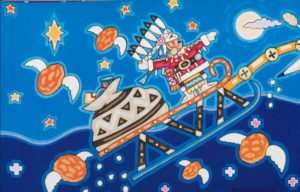
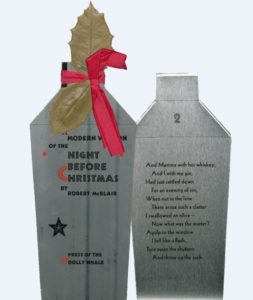
So while Clement C. Moore might never have anticipated that his poem would be more than entertainment for his family and friends, the legacy of his work has left us with something small, but impressive, simple but creative, enduring but constantly open to new interpretation.
A modern version of "'Twas the Night before Christmas" was offered as early as 1932. Everyone who enjoys and looks to the poem around the holiday season probably has their own favorite version.
So until the next retelling … “Happy Christmas to all, and to all a good-night.”

Written by Graduate Student Assistant, Khanh Vo

